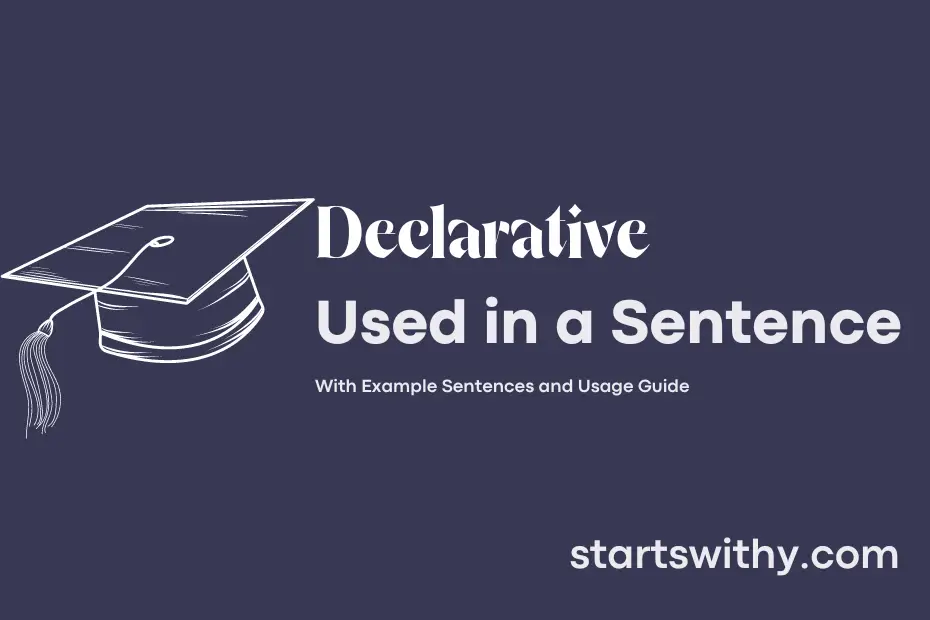Looking to understand the concept of declarative sentences? In the world of grammar, declarative sentences are straightforward and simple. They are statements that relay information or make a point.
These sentences typically end with a period and do not pose a question or give a command. Declarative sentences are commonly used in everyday conversations and writing to express opinions, relay facts, or provide explanations.
7 Examples Of Declarative Used In a Sentence For Kids
- I love to play with my toys.
- My favorite color is blue.
- I have a pet dog named Rocky.
- I enjoy eating ice cream.
- I can count from one to ten.
- I like to draw pictures of flowers.
- I feel happy when I see my friends.
14 Sentences with Declarative Examples
- Declarative statements are often used in academic writing to assert information confidently.
- It is important to use declarative sentences in presentations to clearly convey your ideas.
- Declarative statements can help strengthen your arguments during group discussions.
- When writing a research paper, it is advisable to support your claims with declarative sentences.
- Declarative sentences can be effective in essays to present a strong thesis statement.
- Make sure to incorporate declarative statements when drafting a project report for a professional touch.
- Declarative sentences are handy in exam answers to showcase your knowledge on a subject.
- Utilizing declarative language in group projects can foster collaboration and efficiency.
- In debates, using declarative statements can help you make a convincing case.
- When explaining complex concepts, it is best to break them down into simple declarative statements.
- Declarative sentences can help you stay focused during class discussions and participation.
- It is recommended to practice constructing declarative sentences for effective communication.
- Including declarative statements in your resume can highlight your achievements and skills.
- Mastering the use of declarative sentences can enhance your academic and professional writing skills.
How To Use Declarative in Sentences?
Declarative sentences are used to make statements or declarations. In order to form a declarative sentence, simply make a statement about something. For example, “The sun is shining brightly.” These sentences generally end with a period and do not require any specific punctuation at the beginning.
It’s important to note that declarative sentences are the most common type of sentence in the English language. When you use declarative sentences, you are simply stating a fact or sharing information. This type of sentence is straightforward and often used in everyday communication.
To identify a declarative sentence, look for a subject and a predicate. The subject is the person, place, thing, or idea that the sentence is about, while the predicate includes the verb and describes what the subject is doing or what is being done to the subject.
In writing, using declarative sentences can help you convey information clearly and effectively. They are great for sharing facts, descriptions, opinions, and much more. Practice using declarative sentences in your writing to improve your communication skills and make your writing more concise and direct.
Conclusion
In this article, we explored examples of sentences using declarative statements, which are simple sentences that make statements or assertions. Declarative sentences provide straightforward information, convey facts, or express opinions plainly, without posing questions or making commands. They are the most common type of sentence and are essential for effective communication.
By using declarative sentences in our writing and speech, we can clearly convey information, express thoughts, and communicate ideas with ease. Understanding how to construct declarative sentences can improve the clarity and effectiveness of our communication, making it easier for others to grasp the intended message. So next time you want to make a statement or share a fact, remember the power of declarative sentences in getting your point across.



